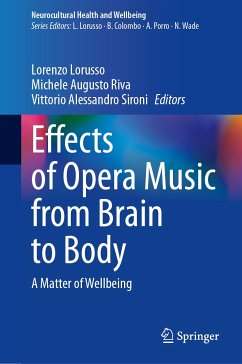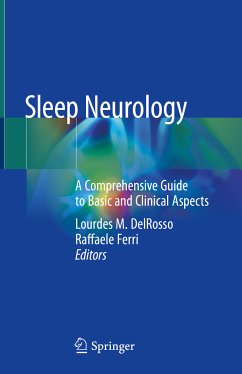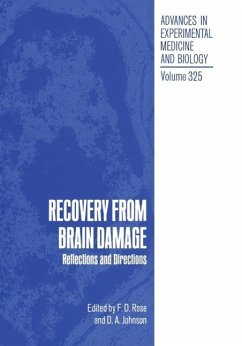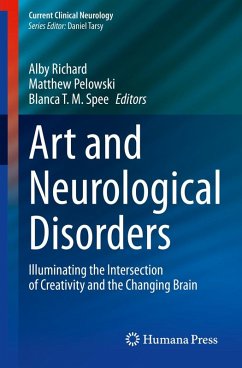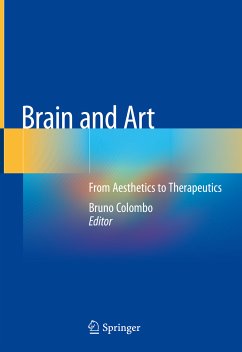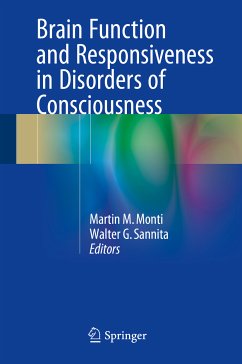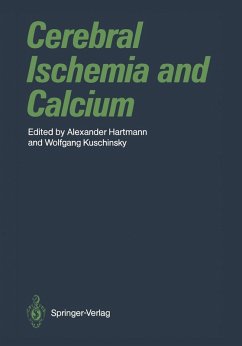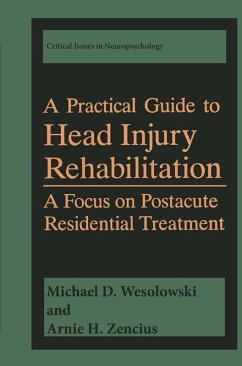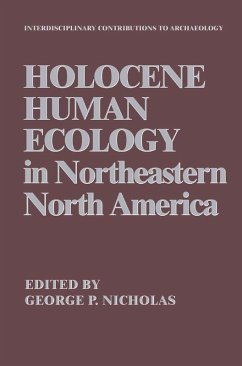
Neuroscience and Art (eBook, PDF)
The Neurocultural Landscape
Versandkostenfrei!
Sofort per Download lieferbar
112,95 €
inkl. MwSt.
Weitere Ausgaben:

PAYBACK Punkte
56 °P sammeln!
This book is focused on how understanding ourselves as humans is incomplete without considering both biological and cultural aspects. Using the neurocultural perspective, the book explores how everything in the world is filtered back and forth through the brain and culture. The thrust of the book, therefore, is to explore the power of art in creating a bridge between cultural and neuroscientific lines of inquiry. Looking at both clinical and non-clinical populations, the text examines historical foundations, distinguishes congenital/developmental conditions from those that are acquired, and em...
This book is focused on how understanding ourselves as humans is incomplete without considering both biological and cultural aspects. Using the neurocultural perspective, the book explores how everything in the world is filtered back and forth through the brain and culture. The thrust of the book, therefore, is to explore the power of art in creating a bridge between cultural and neuroscientific lines of inquiry. Looking at both clinical and non-clinical populations, the text examines historical foundations, distinguishes congenital/developmental conditions from those that are acquired, and emphasizes how the brain constructs our sensory experiences.
Several distinctive features separate this research from other publications. First, the book opens with a review of how the historical literature is still etched into the ideas we employ to explain elements across the interdisciplinary fields of art, aesthetics, our sensory experience, psychology, cognition, and well-being. Second, the research adopts a humanistic rather than a philosophical or social science perspective in demonstrating the value of coupling anatomy and physiology with the natural and social environment. In this, artists from all genres are incorporated. Among them are Iris Murdoch, Ludwig van Beethoven, Leonardo da Vinci, Cristoforo de Predis, Rembrandt, Federico Fellini, Chuck Close, and David Hockney.
Case studies demonstrate how neuroscientific research meshes with art, individual, and cultural variables in ways that range from health and well-being to physiological decline and biological traumas. These include a case study that examines how Oliver Sacks combined biology and biography in his writings. It also explores art projects in several genres inspired by his studies. Another case study is on the role of film as a useful clinical tool. Here the book also demonstrates that cinematic devices used by filmmakers intersect with perceptual and cognitive neuroscience.
A defining feature of the analysis is the integration of research on brain injuries with humanistic responses in film, literature, and the visual arts. This section outlines the lack of consensus regarding the causes and treatment of "shell shock" in World War I before introducing how research and art now work with PTSD/TBI.
Finally, the book examines therapeutic cases of professional and non-professional artists, concluding with a discussion of synesthesia and the senses.
Several distinctive features separate this research from other publications. First, the book opens with a review of how the historical literature is still etched into the ideas we employ to explain elements across the interdisciplinary fields of art, aesthetics, our sensory experience, psychology, cognition, and well-being. Second, the research adopts a humanistic rather than a philosophical or social science perspective in demonstrating the value of coupling anatomy and physiology with the natural and social environment. In this, artists from all genres are incorporated. Among them are Iris Murdoch, Ludwig van Beethoven, Leonardo da Vinci, Cristoforo de Predis, Rembrandt, Federico Fellini, Chuck Close, and David Hockney.
Case studies demonstrate how neuroscientific research meshes with art, individual, and cultural variables in ways that range from health and well-being to physiological decline and biological traumas. These include a case study that examines how Oliver Sacks combined biology and biography in his writings. It also explores art projects in several genres inspired by his studies. Another case study is on the role of film as a useful clinical tool. Here the book also demonstrates that cinematic devices used by filmmakers intersect with perceptual and cognitive neuroscience.
A defining feature of the analysis is the integration of research on brain injuries with humanistic responses in film, literature, and the visual arts. This section outlines the lack of consensus regarding the causes and treatment of "shell shock" in World War I before introducing how research and art now work with PTSD/TBI.
Finally, the book examines therapeutic cases of professional and non-professional artists, concluding with a discussion of synesthesia and the senses.
Dieser Download kann aus rechtlichen Gründen nur mit Rechnungsadresse in A, B, BG, CY, CZ, D, DK, EW, E, FIN, F, GR, HR, H, IRL, I, LT, L, LR, M, NL, PL, P, R, S, SLO, SK ausgeliefert werden.



